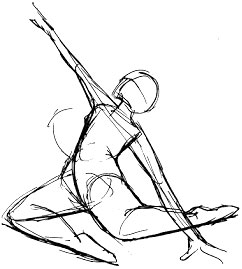FAQ
I get this question a lot, especially when someone is familiar with Soma’s close cousin, Rolfing. Ida Rolf first grew the 10-series from the understanding that she could change a body’s relationship to gravity by working with its fascia. She used A LOT of mechanical force to do so, and by all accounts, it hurt.
Current research into the process by which fascial patterns change recognizes that it is not mechanical force alone that breaks-up fascial adhesions. Complex interactions with the nervous and endocrine systems (or the neuroendocrine system, otherwise stated) mediate the response.
This new understanding allows therapists to work with a subtlety not possible under the old paradigm. The most subtle touch can often be infinitely more effective than over-application of force, and I take this to heart in my practice.
So while Soma can be sensationful, it doesn’t need to get any more intense than ‘hurts-so-good’.
Because Soma often involves movement, I recommend clients wear undergarments such underwear or shorts and a sports bra.
Absolutely.
While the most complete and lasting results come from the systematic application of the series, some amazing change and relief can come from a stand-alone treatment session, or a shorter series of treatment sessions.
Soma was developed by Bill Williams, PhD, a psychologist who worked with Ida Rolf for over 20 years. When Ida created the 10-series, she envisioned the study of Structural Integration taken into 3 different domains: the physical, the psychological, and the metaphysical. Soma Neuromuscular Integration, with the blessing of Ida Rolf, was developed as an inquiry and application of the psychological component of Structural Integration. Soma takes a mind-body-spirit approach to working with the whole person and integrates different expressive means into the healing process.
Soma also added a session to the series which focuses on integrating the arms and shoulder girdle.
While Soma shares similarities to massage, and can be enjoyed much in the same way, the model on which Soma is based looks at the body as an integrated whole, systematically seeking to balance that whole in the gravity field. This results in long-term results that extend far off the table.
Fascia comes in many varieties and performs many functions within the body. Soma interacts particularly with the superficial and deep fascia. Deep fascia is a sheath of connective tissue that surrounds and interpenetrates the muscles, creating muscle structure and its attachment to bone. Traditionally, anatomists have found that humans have around 650 different muscles. Another way to look at that is to say that humans have one huge muscle with 650 fascial compartments. Superficial fascial is the connective issue more immediately under our skin which governs its movement.
Fascia gives structure and shape to the body, and can be a site of holding patterns and embodied memory. Working with fascia allows the practitioner to interact with the patterning impulse of structure.
